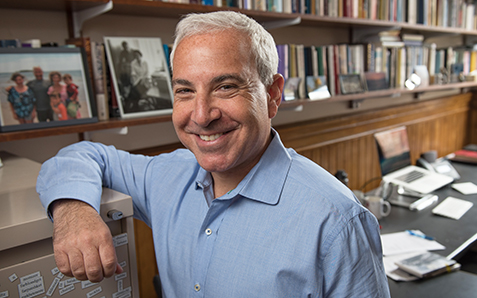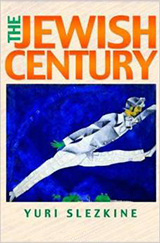

/ Published May 29, 2015
A sweeping look at the Jewish 20th century through the lens of Sholem Aleichem’s tales and two murdered Yiddish poets.
As a scholar whose interests are at the crossroads of modern Jewish literature, history and politics, I found that Yuri Slezkine’s The Jewish Century (Princeton University Press, 2004) ignited my imagination.
Slezkine frames his interpretation of modern Jewish history through a reading of Sholem Aleichem’s Yiddish tales about the misadventures of Tevye the Dairyman and four of his strong-willed daughters, the basis for the musical and film Fiddler on the Roof. Slezkine imagines Tevye’s daughters as symbols of the challenges and opportunities resulting from the Jewish encounter with European nationalism and the seductive promises of an age of secularization, economic and social mobility, and universalist ideologies.

In Tsaytl, the daughter who marries a poor tailor to continue a traditional life in the shtetl, Slezkine sees the fate of Jews who continued to orient their lives around duty to an inherited tradition without ever benefitting from European culture—only to be murdered by the products of that very same kultur in their own towns during World War II.
In Chava, the daughter who converts to marry her Ukrainian lover and then returns to her father to beg forgiveness, Slezkine reads the story of Zionist awakening.
In Bielke, the daughter who moves to America with a husband for whom status is more important than Jewish cultural literacy, Slezkine sees American Jewry as perhaps more socially and economically secure than any previous Jewish diaspora community but possessing a Jewishness based on a shallow interpretation of ethnic difference rather than on the ability to navigate a Jewish text or language.
Slezkine concludes that we know a great deal about these women because their fates have been the concern of both Jewish collective memory and the way in which we teach Jewish studies. That is, curricula on the Jewish experience in the 20th century typically emphasize the teaching of the Holocaust, Zionism and the State of Israel, and the American immigrant experience, exploring the tensions between memory and creativity that flowed from them.
Slezkine’s book certainly frustrates readers with its blunt stereotypes, generalizations and one-dimensional readings. But it also sets up a dramatic and necessary intervention in its portrait of Hodel, the daughter who marries a fiery radical and leaves home for Siberia to spread word of revolution. This poses the question: Why do we know more about the mass external Jewish migration to America and to mandatory Palestine than we do about the great internal migration of Jewish youth from hundreds of small towns in Eastern Europe to its big cities, where they willingly divested themselves of their traditional identities in order to build the model Soviet?
Slezkine’s questions remind me of the distance in register between two of my favorite Soviet Yiddish poems. In Moyshe Kulbak’s “The City” (1919), the revolutionary hope of Jewish youth is performed in their shouts of “Let us go, let us go / Let us leave the weak ones behind… / Let us open our dreams and forge our own Truth.” Less that a quarter century later, their betrayal is reflected back in Peretz Markish’s “Shards” (1940–43): “My heart has fallen, like a mirror on a stone.” Both Kulbak and Markish would meet their bloody fates in Stalin’s purges of Yiddish culture.
Slezkine suggests that the Holocaust was not the only trauma Jews suffered in the 20th century. Hodel’s fate is that of Soviet Jewry, first betrayed by their faith in revolutionary equality, then more brutally by Stalin’s liquidation of Yiddish culture. In constructing a reading of The Jewish Century around a model of Tevye’s daughters and their three promised lands (America, Israel and the Soviet Union), Slezkine is able to reincorporate the history of the Jewish romance with communism into a narrative that was excluded due to Soviet silencing and Cold War politics. He provocatively suggests that although communism was not a Jewish religion, it nonetheless was among the most important belief systems for Jews in the first half of the 20th century, exceeding both Zionism and even traditional Judaism for the hearts and minds of the Jewish masses.
In the end, Slezkine argues that America triumphed as a Jewish promised land because it was the least revolutionary, never promising a miracle to begin with, “just better luck.” Similarly, Zionism is seen as an ideological success because it delivered on its promise of securing a homeland for world Jewry.
The book leaves us with the question that would haunt Hodel and her descendants—those who tied their dreams to the Soviet Union: “Did we really believe that?”
The author’s ability to offer a new paradigm for thinking about modern Jewish history provokes readers to think about the ways in which radical politics often change the world for the better, but can just as easily consume—often violently—their most adoring followers by imposing new versions of totalitarianism under the rhetoric of progressive politics.
This dramatic tale is a cautionary narrative of what happens to Jews when they try to be everything to everyone, when they misread their Jewishness for their humanism and in the process betray themselves.
Justin Cammy is an associate professor of Jewish studies and comparative literature.















